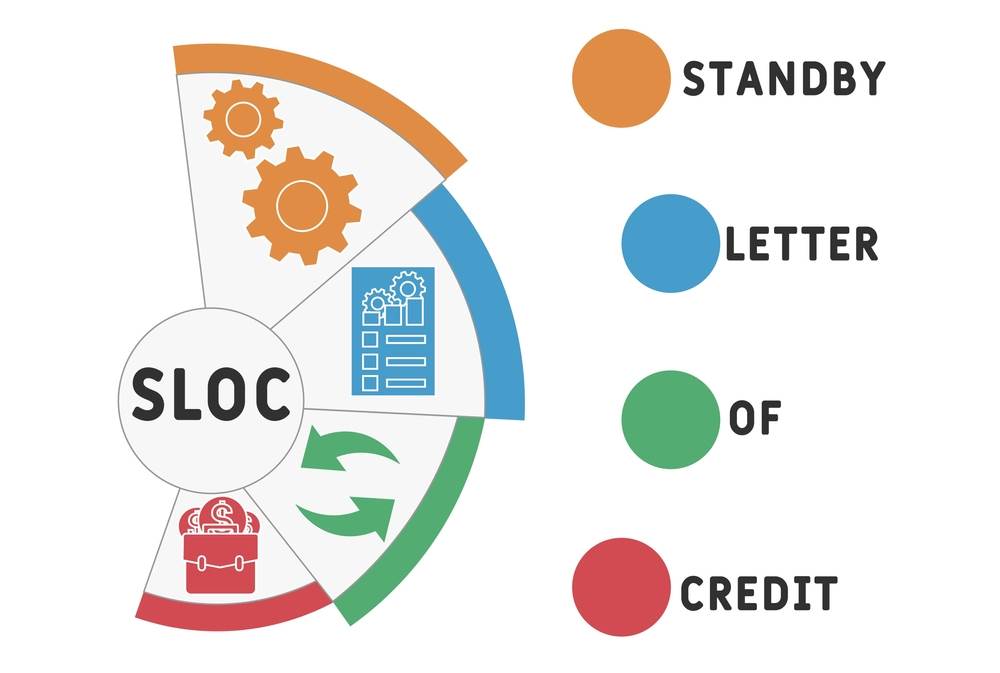Financial instruments play a crucial role in facilitating smooth and secure transactions in international trade and business transactions. One such instrument is the Commercial Standby Letter of Credit (SBLC). This article aims to provide a detailed understanding of a Commercial SBLC, its purpose, benefits, and how it works.
What is a Standby Letter of Credit?
A Standby Letter of Credit (SBLC) is a financial instrument issued by a bank or financial institution on behalf of a client. It serves as a guarantee of payment to the beneficiary in case the applicant fails to fulfil their contractual obligations. The SBLC acts as a secondary payment method and assures the beneficiary that they will receive a payment if the applicant defaults.
Understanding the Commercial Standby Letter of Credit
A Commercial Standby Letter of Credit is a specific type of SBLC primarily used in commercial transactions. It assures the beneficiary that the applicant will make payment for goods or services rendered. It safeguards against non-payment or default by the applicant, ensuring financial security and building trust between parties involved in the transaction.
Benefits of Using a Commercial SBLC
Financial Security:
A Commercial SBLC assures the beneficiary will receive payment even if the applicant fails to fulfil their obligations.
Global Acceptance:
SBLCs are recognized and accepted globally, making them a reliable financial instrument for international trade.
Flexibility:
Commercial SBLCs can be tailored to meet specific transaction requirements, allowing parties to negotiate favourable terms.
Enhanced Credibility:
By providing a guarantee of payment, a Commercial SBLC enhances the applicant’s credibility, making it easier to establish business relationships.
Mitigating Risk:
SBLCs minimize non-payment risk, protecting both the beneficiary and the applicant from potential financial losses.
The Application Process for a Commercial SBLC
Obtaining a Commercial SBLC involves the following steps:
Application:
The applicant submits a request to the issuing bank, providing necessary information about the transaction and the beneficiary.
Evaluation:
The issuing bank evaluates the applicant’s creditworthiness and determines the SBLC’s feasibility.
Terms and Conditions:
The issuing bank and the applicant agree upon the terms and conditions of the SBLC, including the amount, expiry date, and beneficiary details.
Issuance:
Once the terms are agreed upon, the issuing bank prepares and issues the Commercial SBLC to the beneficiary.
Notification:
The issuing bank notifies the beneficiary about the issuance of the SBLC, providing the necessary details for verification.
Parties Involved in a Commercial SBLC
A Commercial SBLC involves three primary parties:
Applicant:
The party applying for the SBLC, usually the buyer or the importer.
Beneficiary:
The party to whom the SBLC is issued, usually the seller or the exporter.
Issuing Bank:
The bank or financial institution that issues the Commercial SBLC on behalf of the applicant.
Difference Between a Commercial SBLC and a Bank Guarantee
While both Commercial SBLCs and bank guarantees serve as financial assurances, they have distinct differences. A Commercial SBLC is specific to commercial transactions, ensuring payment for goods or services. In contrast, a bank guarantee is more general. It can cover various obligations, such as performance guarantees or bid bonds.
Common Uses of Commercial Standby Letters of Credit
Commercial SBLCs are commonly used in the following scenarios:
International Trade:
SBLCs facilitate secure and reliable transactions in international trade by providing financial security to buyers and sellers.
Construction Projects:
SBLCs are utilized in construction projects to ensure timely payment to contractors, subcontractors, and suppliers.
Business Contracts:
SBLCs are employed in various business contracts to guarantee payment and mitigate risks associated with non-performance or default.
Customs and Import/Export Transactions:
SBLCs can be used to comply with customs regulations and secure the release of goods at the port of entry.
Types of Commercial SBLCs
There are different types of Commercial SBLCs, including:
Financial SBLC:
Used to support financial obligations, such as loans or credit lines.
Performance SBLC:
Ensures the performance of a specific task or project.
Bid Bond SBLC:
Assures that the bidder will honour the bid terms and enter into a contract if awarded.
Advance Payment SBLC:
Secures advance payments made by the buyer to the seller.
Key Elements of a Commercial SBLC
A Commercial SBLC typically includes the following key elements:
Applicant Information:
Details about the applicant, including name, address, and contact information.
Beneficiary Information:
Details about the beneficiary, including name, address, and contact information.
Amount and Currency:
The monetary value and the currency in which the SBLC is issued.
Expiry Date:
The date the SBLC expires and is no longer valid.
Terms and Conditions:
The specific terms and conditions of the SBLC, including any additional requirements or documents.
Instructions for Payment:
The process and conditions for payment under the SBLC.
Issuing and Receiving Banks in a Commercial SBLC
The issuing bank is responsible for issuing the Commercial SBLC to the beneficiary. The receiving bank, the beneficiary’s bank, receives and verifies the SBLC to ensure its authenticity and validity. The banks play a crucial role in facilitating the smooth operation of the SBLC and ensuring compliance with the agreed-upon terms.
The Role of the International Chamber of Commerce (ICC)
The International Chamber of Commerce (ICC) sets the standard rules and guidelines for international trade and banking practices, including the rules governing Commercial SBLCs. The ICC’s Uniform Customs and Practice for Documentary Credits (UCP 600) provides a framework for issuing and utilizing SBLCs, ensuring uniformity and minimizing discrepancies in international trade transactions.
Standby Letter of Credit vs Documentary Letter of Credit
While both SBLCs and Documentary Letters of Credit (DLCs) are financial instruments used in international trade, they have significant differences. A Standby Letter of Credit primarily serves as a payment guarantee in case of default. At the same time, a Documentary Letter of Credit ensures payment upon presenting specified documents that comply with the terms of the credit.
Standby Letter of Credit vs Performance Bond
A Standby Letter of Credit and a Performance Bond are similar in their purpose to provide financial security in contractual agreements. However, an SBLC primarily guarantees payment, while a Performance Bond ensures the performance of a specific task or project. Both instruments can be used together to provide comprehensive coverage in complex transactions.
Risks Associated with Commercial Standby Letters of Credit
While Commercial SBLCs offer various benefits, they also come with certain risks, including:
Fraudulent SBLCs:
The risk of receiving fraudulent or counterfeit SBLCs exists, emphasizing the importance of due diligence and verification.
Non-Performance by Banks:
In rare cases, banks may fail to honour the SBLC, leading to delays or disputes in payment.
Non-Performance by Applicants:
If the applicant fails to fulfil their obligations, the beneficiary may avoid facing challenges in receiving payment.
Tips for Utilizing Commercial SBLCs Effectively
To effectively utilize Commercial SBLCs, consider the following tips:
Thorough Due Diligence:
Conduct comprehensive research and diligence on the issuing bank and applicant to mitigate risks.
Clear and Precise Terms:
Ensure that the terms and conditions of the SBLC are clearly defined and align with the requirements of the transaction.
Prompt Communication:
Maintain open and transparent communication with all parties involved to promptly address any issues or concerns.
Regular Monitoring:
Monitor the status and validity of the SBLC to ensure timely action and compliance with the agreed-upon terms.
Engage Expert Advice:
Seek professional advice from trade finance experts or legal professionals to navigate complex SBLC transactions effectively.
Conclusion
Commercial Standby Letters of Credit (SBLCs) are valuable financial instruments that provide security and confidence in international trade and business transactions. By acting as a payment guarantee, SBLCs mitigate the risk of non-payment and foster trust between parties. Understanding the intricacies of Commercial SBLCs is essential for businesses engaging in global trade, ensuring smooth and successful transactions.





